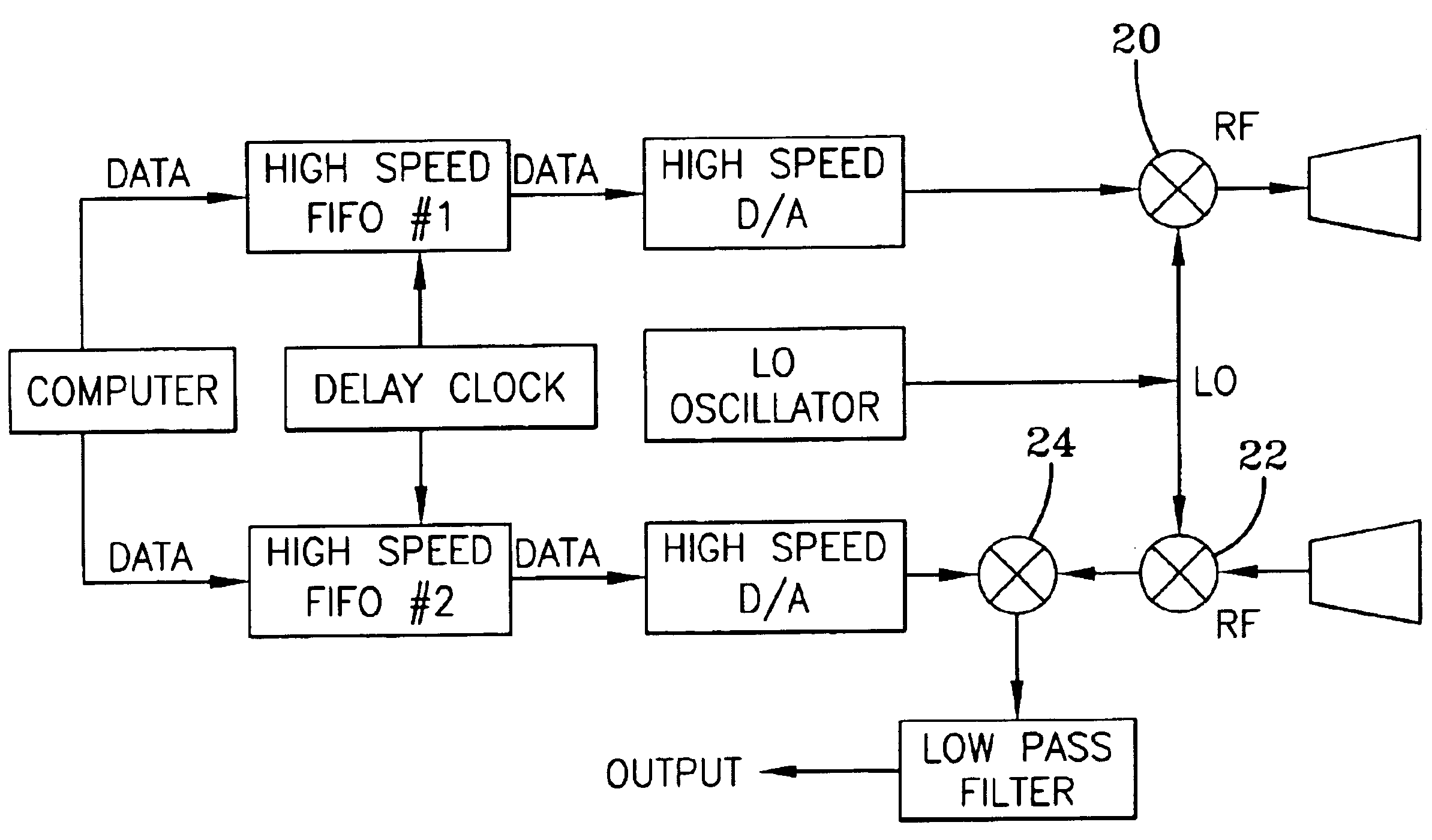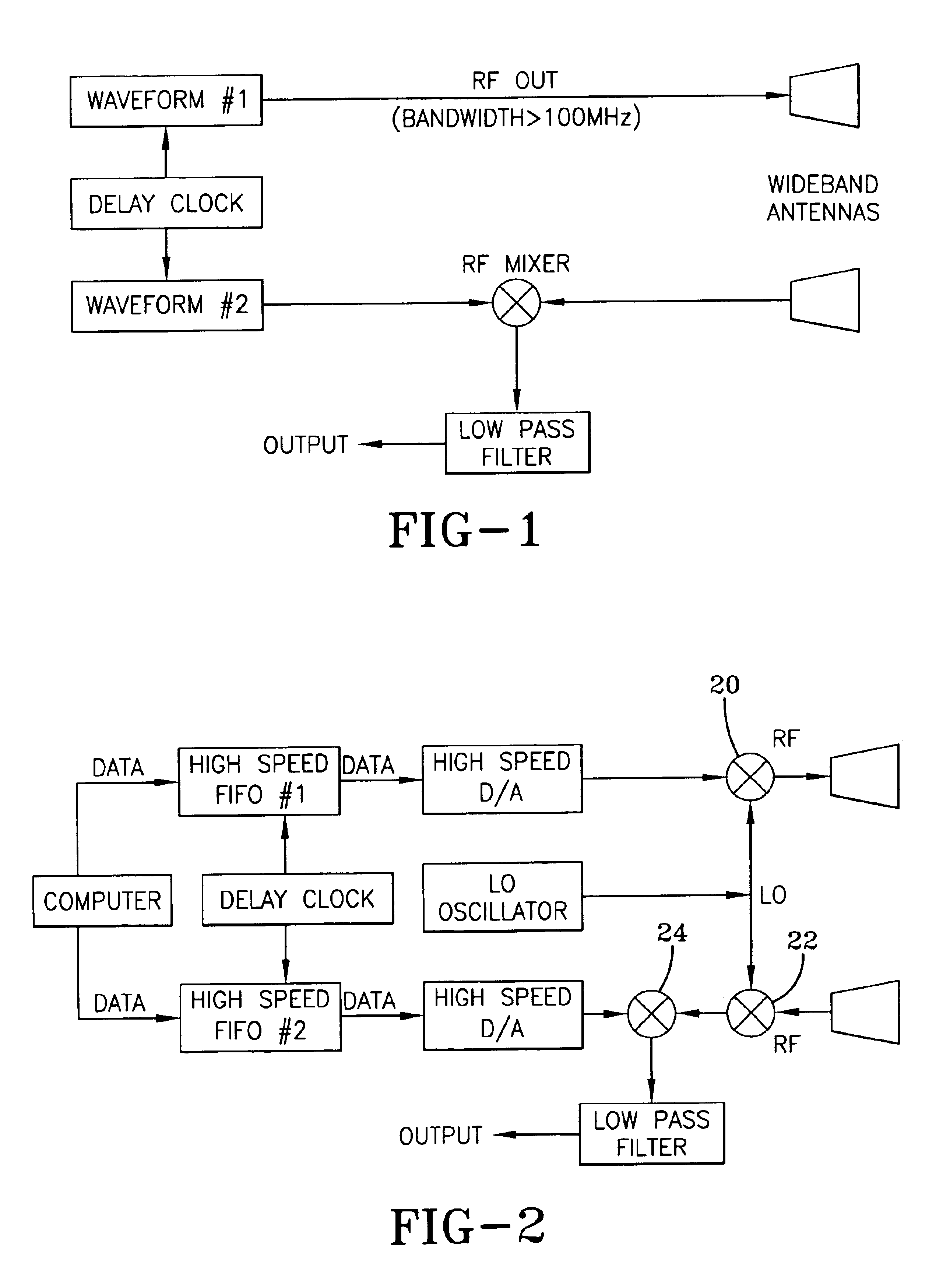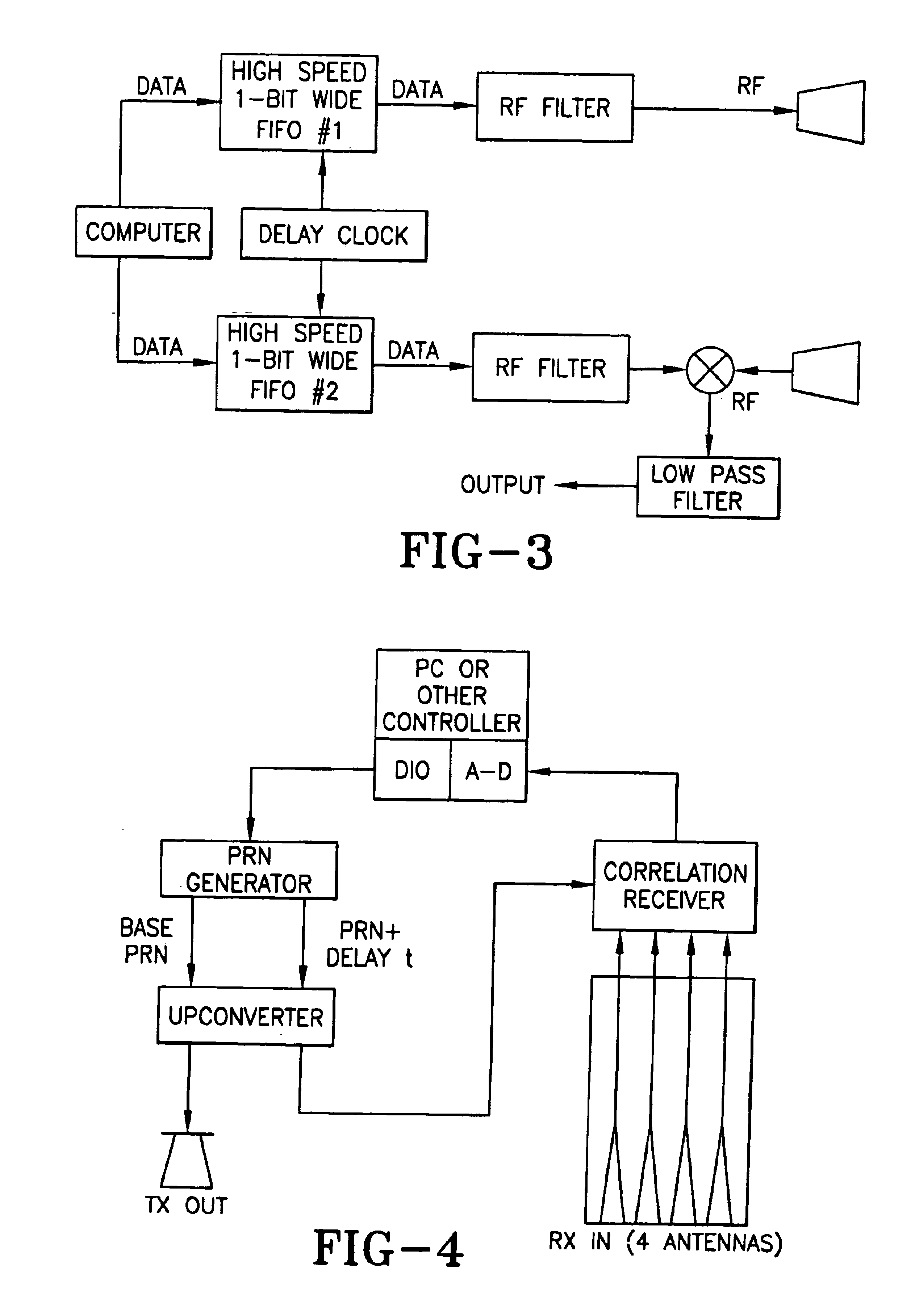Radar system using random RF noise
a random noise and radar technology, applied in the field of radars, can solve the problems of affecting the performance of radars, and signals transmitted by radars can interfere with the functioning of other electronic devices,
- Summary
- Abstract
- Description
- Claims
- Application Information
AI Technical Summary
Benefits of technology
Problems solved by technology
Method used
Image
Examples
examples
An exemplary embodiment of a stealthy noise radar for vehicle obstacle avoidance was built. This example of the noise radar achieved stealth by using a noise-like (pseudorandom) waveform with more than 700 MHz of bandwidth. The radar used parallel analog correlation cross correlation for receiving. This provided protection from jamming (accidental due to local communications transmitters or deliberate) as well as mitigation of interference caused by the radar. Several radars of the same design can be operated in the vicinity of each other without interfering each other.
The radar was mounted on a stationary support and tested in a foliage environment. It showed that it can detect, range, and / or classify obstacles such as humans, cinder blocks, metal cylinders, various size trees, tree stumps, rocks, and holes. In particular, this embodiment could detect humans to 250 feet and small trees to 350 feet.
The radar, for example, may use a single steered-beam antenna or a multi-beam antenna...
PUM
 Login to View More
Login to View More Abstract
Description
Claims
Application Information
 Login to View More
Login to View More - R&D
- Intellectual Property
- Life Sciences
- Materials
- Tech Scout
- Unparalleled Data Quality
- Higher Quality Content
- 60% Fewer Hallucinations
Browse by: Latest US Patents, China's latest patents, Technical Efficacy Thesaurus, Application Domain, Technology Topic, Popular Technical Reports.
© 2025 PatSnap. All rights reserved.Legal|Privacy policy|Modern Slavery Act Transparency Statement|Sitemap|About US| Contact US: help@patsnap.com



